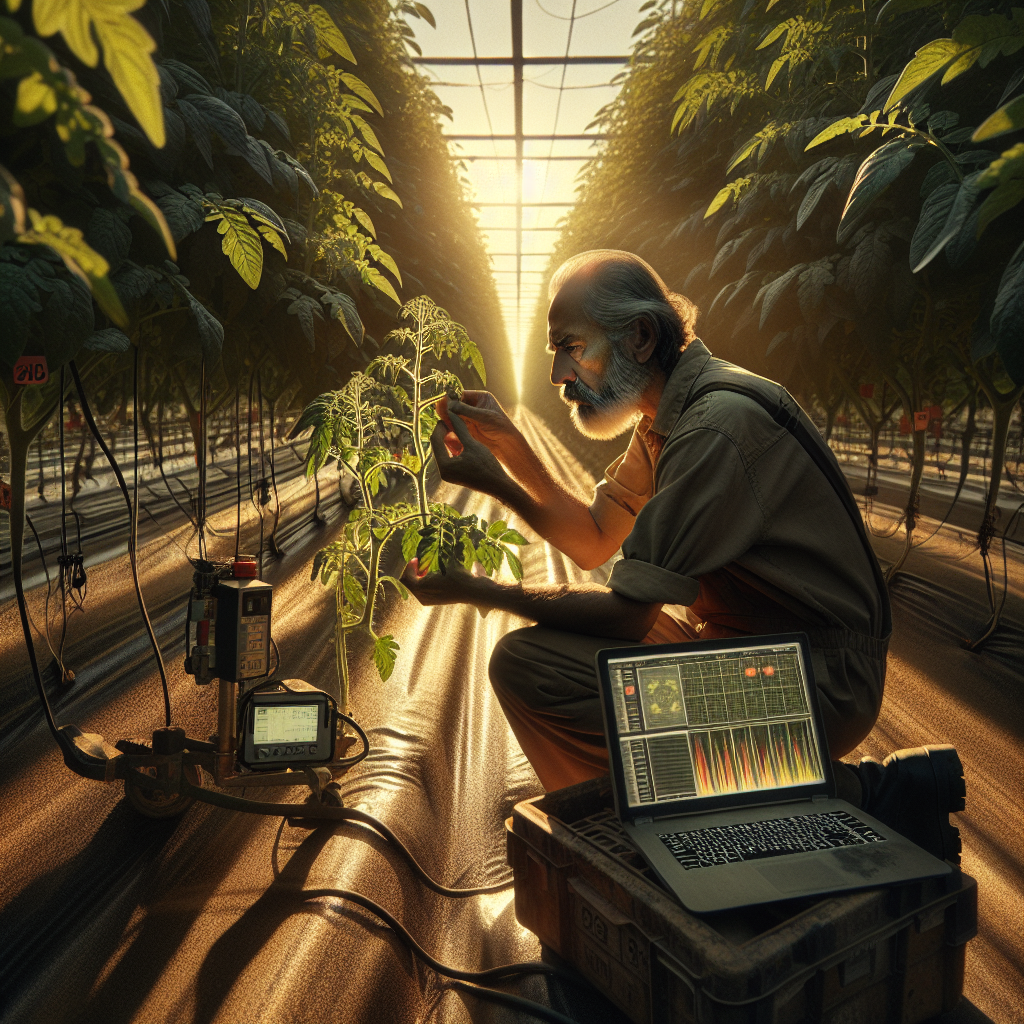AI Stops Early Blight in Ruskin Greenhouses | Tampa Bay

Title: Stopping Early Blight Before It Starts—How Ruskin Tomato Greenhouses Can Combine AI-Powered Computer Vision and Microclimate Optimization to Protect Yields
By EarlyBird AI
—
Executive Summary
Early blight can wipe out 20–30% of a tomato crop in a single season. For Ruskin growers—many of whom supply grocery chains across Tampa Bay—those losses translate into millions of dollars in wasted inputs, lost contracts, and reputational damage. New advances in artificial intelligence, computer vision, and climate automation now allow greenhouse operators to detect the first visual signs of blight and fine-tune growing conditions long before disease spreads.
This article shows Tampa Bay producers how to:
• Deploy cameras and machine-learning models that flag leaf lesions hours after they appear
• Adjust humidity, airflow, and temperature to slow fungal development
• Integrate alerts into existing control systems without costly rip-and-replace projects
• Achieve payback in a single season while laying the groundwork for broader AI-driven operations
Throughout, we address common questions greenhouse executives raise—what the technology does, how it fits existing workflows, and where the ROI comes from.
—
- The Business Impact of Early Blight in Ruskin
Ruskin’s humid coastal climate accelerates Alternaria solani spores. Even vigilant scouts can miss the faint “bull’s-eye” patterns that mark early infection. Once lesions spread to 20% of foliage, weekly yield losses climb sharply and chemical interventions become less effective.
For a 15-acre hydroponic facility, that can mean:
• $1.2 million in annual revenue at risk
• 18% increase in labor and fungicide costs
• Potential contract penalties for short shipments
AI early blight detection in a Ruskin tomato greenhouse cuts those risks dramatically by providing continuous, unbiased monitoring and data-driven climate control.
—
- How AI-Powered Computer Vision Spots Disease First
Traditional scouting covers only a fraction of plants. In contrast, networked cameras mounted on gantries or greenhouse rails capture every row, every hour. Video streams are processed by a lightweight machine-learning model—technically a convolutional neural network, or CNN. Put simply, a CNN learns to recognize pixel patterns that match early blight lesions, much like facial-recognition software identifies a face.
Key features for executives:
• Accuracy: Pilot projects in Florida show 93% precision in identifying early blight versus 68% with manual scouting.
• Speed: Notifications reach growers within five minutes of image capture, allowing same-day intervention.
• Scalability: A single edge computer can analyze feeds from up to 40 HD cameras, minimizing infrastructure.
This computer vision tomato disease monitoring in Tampa Bay helps teams act before lesions coalesce and spores spread.
—
- Optimizing the Microclimate to Slow Disease
Detection is only half the equation. Fungal pathogens thrive when leaf-surface moisture and nighttime humidity exceed 85%. AI-driven greenhouse climate control in Tampa Bay uses predictive models to maintain conditions that suppress disease without stressing plants.
The process:
a. Sensors collect temperature, relative humidity, VPD (vapor-pressure deficit), and airflow data every minute.
b. A machine-learning model forecasts microclimate trends four hours ahead.
c. Ventilation fans, foggers, and heating pipes are modulated through the existing PLC or SCADA system—the industrial software most growers already use for automation.
d. Anomaly alerts are routed to mobile dashboards if humidity targets drift.
Growers see fewer outbreaks and more uniform ripening, lowering both chemical use and energy costs. In short, microclimate optimization for Ruskin greenhouses reduces disease pressure and supports higher-quality fruit.
—
- Integration, Not Disruption
Many executives fear a technology upgrade will require tearing out current systems. That is rarely necessary.
EarlyBird AI’s integration model:
• Hardware-agnostic: We work with standard IP cameras and common sensor brands.
• Open protocols: Data flows through OPC UA or MQTT, the same formats your automation vendor supports.
• Modular rollout: Start with one bay or block, validate results, then expand.
Because alerts, set-points, and historical charts reside inside your familiar dashboard, growers adopt the workflow quickly.
—
- Financial Case and Payback
A mid-size Ruskin tomato greenhouse technology upgrade typically involves:
• 30 cameras: $18,000
• Edge computer and licenses: $9,500
• Supplemental sensors and integration: $12,000
• Annual software and support: $7,500
Total Year-1 investment: $47,000
Annual benefits documented across Florida greenhouse operations:
• Crop-loss reduction: $120,000–$180,000
• Chemical savings: $15,000
• Energy optimization: $8,000
Net payback: 4–7 months, with continuing benefits in every following season.
—
- Implementation Roadmap
Month 1: AI consulting for Florida greenhouse operations begins with a two-day site audit—camera angles, network capacity, and baseline disease incidence.
Month 2: Pilot in one bay. Cameras stream to cloud for model training on site-specific cultivars.
Month 3: Pilot review; refine detection threshold. Expand to full facility.
Month 4: Activate closed-loop climate control. Operators approve set-point recommendations before automation goes live.
Ongoing: Quarterly performance reviews benchmark disease incidence, chemical use, and yield versus prior seasons.
This structured approach helps prevent tomato crop loss with AI in Tampa while minimizing operational risk.
—
- Local Success Story
A 12-acre grower south of Sun City Center deployed our early blight AI solution for Tampa growers last season. Results:
• 27% drop in diseased clusters
• 14% reduction in fungicide applications
• 9% increase in marketable yield
• Full ROI in five months
The owner now plans to expand AI to nutrient dosing and labor scheduling.
—
Conclusion
Early blight need not be a cost of doing business in humid Southwest Florida. By pairing computer vision with proactive climate management, Ruskin growers can detect infections sooner, suppress disease pressure, and protect contracts. The technology is proven, affordable, and designed to integrate with systems you already trust.
Ready to unlock the power of AI for your business? Contact EarlyBird AI today for a free consultation and discover how our tailored solutions can drive growth and efficiency for your Tampa Bay enterprise.